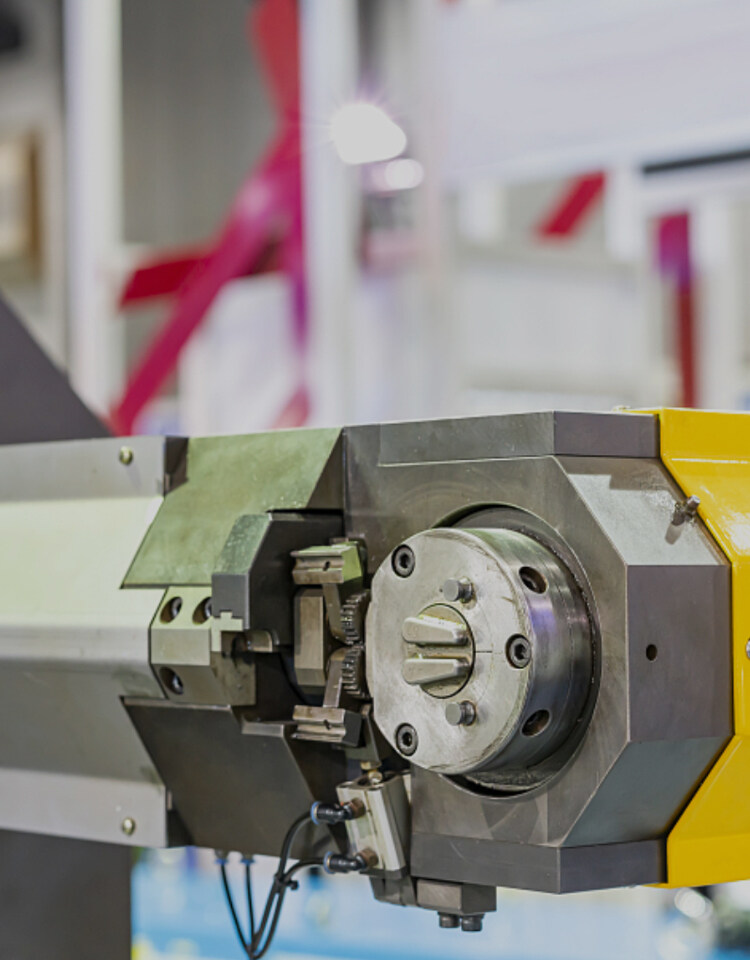Error de formato de correo electrónico
emailCannotEmpty
emailDoesExist
pwdLetterLimtTip
inconsistentPwd
pwdLetterLimtTip
inconsistentPwd

Noticias
Noticias

Exploring Latest Innovations in Wire Bending Machine Technology
Wire bending machines have come a long way since their inception, with significant improvements in precision, speed, and versatility. These machines use Computer Numerical Control (CNC) technology to accurately bend wires into complex shapes and designs. With the integration of advanced software and mechanical systems, wire bending machines can now handle a wide range of materials and thicknesses, making them indispensable in various industries.
Advancements in CNC technology have played a crucial role in enhancing the capabilities of wire bending machines. These machines can now handle intricate designs and curves with minimal error tolerance, resulting in high-quality wire products. The automation and robotics in wire bending have further improved the efficiency and productivity of these machines, allowing for faster production and reduced labor costs.
Materials and applications in wire bending have also expanded, with wire bending machines capable of working with a variety of materials such as steel, brass, aluminum, and more. This versatility opens up new possibilities in industries such as automotive, aerospace, furniture, and medical equipment manufacturing.
As we look to the future, the potential for wire bending machines is limitless. With advancements in artificial intelligence and smart manufacturing systems, we can expect even greater integration between wire bending machines, robotics, and automation. This level of connectivity will streamline the manufacturing process, leading to increased efficiency, cost savings, and improved product quality.
The Evolution of Wire Bending Machines
In the early days, wire bending was a manual and labor-intensive process. Skilled artisans would shape wires by hand, relying on their expertise and precision. However, this method was time-consuming and limited in terms of complexity and consistency.
With the advent of automation and computer numerical control (CNC) technology, wire bending machines underwent a revolutionary transformation. CNC wire bending machines introduced the ability to program and control the bending process, allowing for greater precision, repeatability, and versatility.
Today, wire bending machines are equipped with advanced software and mechanical systems that enable them to bend wires into complex shapes with high accuracy. These machines can handle a wide range of wire diameters and materials, including steel, aluminum, and brass.
As wire bending machines continue to evolve, we can expect to see further advancements in areas such as artificial intelligence, machine learning, and additive manufacturing. These technologies will enable wire bending machines to push the boundaries of what is possible, opening up new opportunities in industries such as automotive, aerospace, and electronics.
The evolution of wire bending machines has revolutionized the manufacturing industry. From manual labor to automated precision, these machines have become an indispensable tool for creating complex wire shapes. With ongoing advancements in technology, we can look forward to even more exciting innovations in the field of wire bending.
Automation and Robotics in Wire Bending
Automation and robotics have revolutionized the wire bending industry, making it more efficient, precise, and cost-effective. With the advancement of technology, wire bending machines now incorporate automated features and robotic capabilities to streamline the manufacturing process.
One of the key innovations in wire bending automation is the integration of computer numerical control (CNC) technology. CNC wire bending machines use advanced software and mechanical systems to accurately and efficiently bend wires into desired shapes. These machines offer greater precision, speed, and flexibility compared to traditional manual bending methods.
Robotic arms are also playing a crucial role in wire bending automation. Collaborative robots, or cobots, are designed to work alongside human operators, enhancing productivity and safety in the manufacturing environment. These robots can handle the bending process, pick and place wires, and collaborate with external bending machines to achieve complex wire bending tasks.
The combination of automation and robotics in wire bending has several advantages. It improves production efficiency by reducing manual labor and increasing the speed of wire bending processes. It also enhances product quality and consistency by eliminating human errors and ensuring precise and repeatable bending results. Additionally, automation and robotics enable manufacturers to handle a wide range of wire sizes and materials, expanding the possibilities for wire bending applications.
Materials and Applications in Wire Bending
Wire bending machines have revolutionized the manufacturing industry by offering precision and efficiency in shaping various materials. These machines are capable of working with a wide range of materials, including steel, brass, aluminum, and more. This versatility allows manufacturers to create a diverse range of products and components.
One of the key advantages of wire bending machines is their ability to work with different wire diameters. Whether it's thin wires for delicate components or thicker wires for structural applications, these machines can handle them all. This flexibility opens up endless possibilities for designers and engineers to create innovative products.
In terms of applications, wire bending machines are widely used in various industries. In the automotive industry, these machines are used to create suspension springs, seat frames, and exhaust components. The aerospace industry relies on wire bending machines for critical components like landing gear and engine mounts. In the furniture industry, these machines enable designers to create intricate and customized designs.
Medical equipment manufacturers also benefit from wire bending machines, as they can produce precision tools and components for surgical instruments and braces. The construction and architecture sectors utilize these machines to create unique structures and designs from reclaimed materials.
The future of wire bending machines looks promising, with advancements in automation and robotics. These machines will continue to play a crucial role in the manufacturing industry, enabling faster production, improved precision, and increased customization. As technology continues to evolve, we can expect to see even more materials and applications being explored in the field of wire bending.
The Future of Wire Bending Machines
As we look ahead to the future of wire bending machines, it is clear that this technology will continue to play a vital role in the manufacturing industry. With ongoing advancements in automation, robotics, and CNC technology, wire bending machines will become even more efficient, precise, and versatile.
One of the key areas of development in wire bending machines is the integration of artificial intelligence (AI) and machine learning algorithms. These technologies will enable machines to learn from previous bending tasks and make real-time adjustments to optimize their performance. By analyzing data and patterns, wire bending machines will be able to adapt to different materials, shapes, and specifications, resulting in faster production times and improved accuracy.
Another exciting development is the use of collaborative robots, or cobots, in wire bending processes. These robots can work alongside human operators, enhancing productivity and safety in manufacturing environments. Cobots are designed to be intuitive and easy to program, allowing operators to quickly teach them new bending tasks. This collaboration between humans and robots will lead to increased efficiency and reduced labor costs.
Furthermore, the future of wire bending machines will see advancements in material capabilities. As new materials and alloys are developed, wire bending machines will need to adapt to accommodate these changes. Manufacturers will require machines that can handle a wider range of materials, including high-strength steels, titanium, and composites. This will open up new possibilities for the production of lightweight and durable products.
Overall, the future of wire bending machines looks promising. With advancements in AI, robotics, materials, and integration with other manufacturing technologies, these machines will continue to drive efficiency, precision, and productivity in the manufacturing industry. As manufacturers embrace these innovations, we can expect to see even more impressive wire bending capabilities and applications in the years to come.

